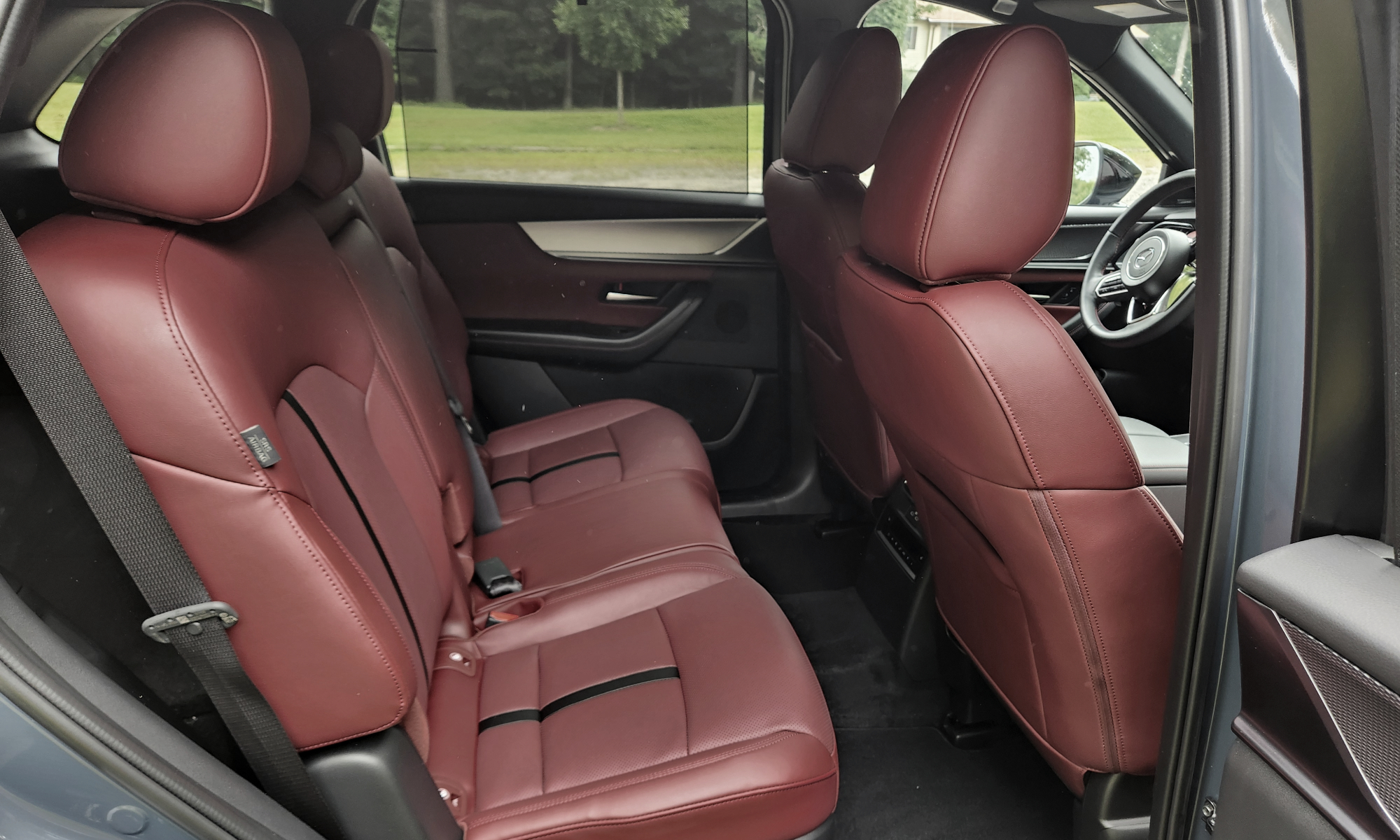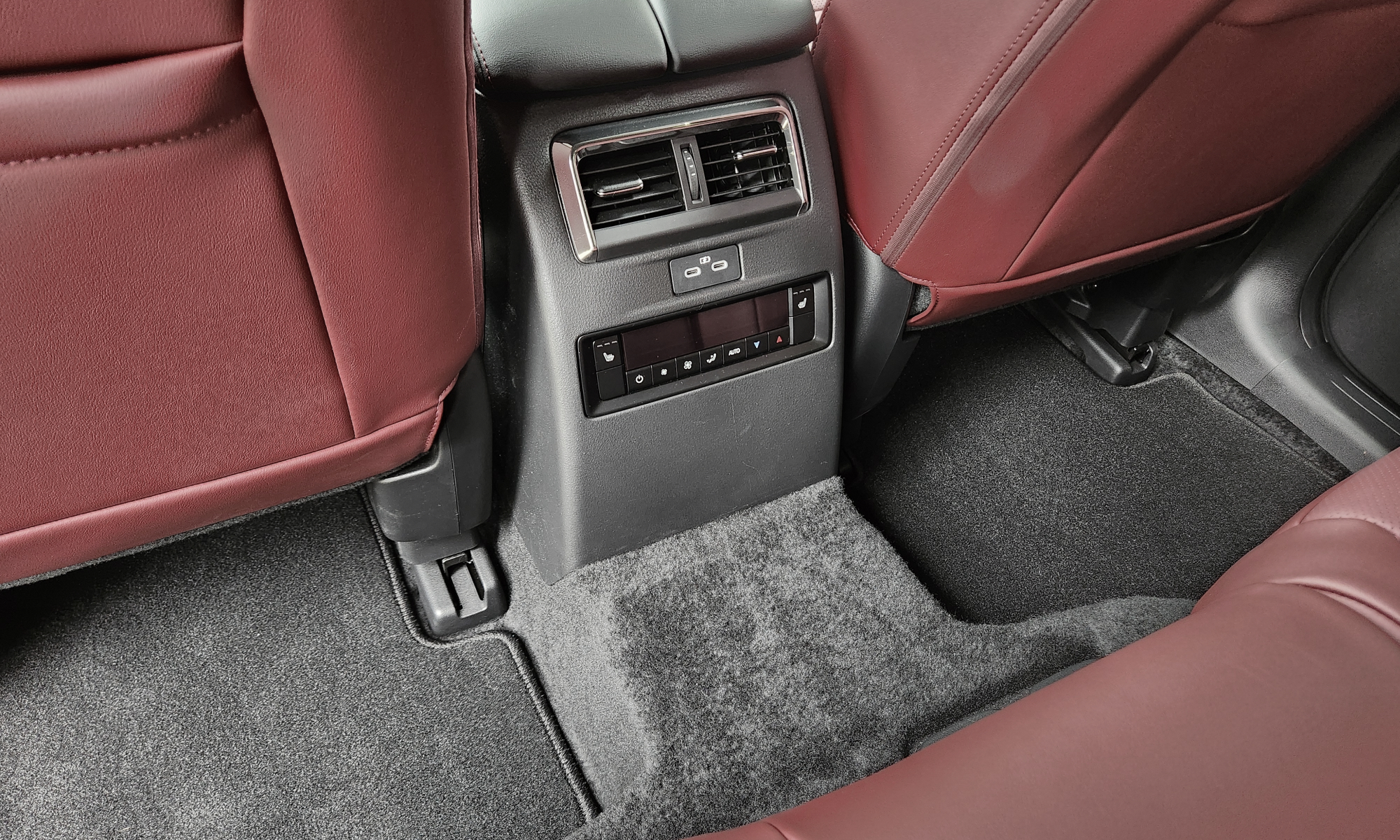I’m partial to good-looking vehicles and have a long-standing opinion that Mazdas usually look classier than their competition. Whether it’s rounded body corners, unique paint colors, or a sportier profile, Mazdas look like they should cost more than they do. When I had the chance to drive a 2025 Mazda CX-70 PHEV for a week recently, it didn’t disappoint in appearance. It looked great.
The CX-70 is an AWD, two-row, five-passenger version of the Mazda CX-90. It’s a mid-sized SUV that looked more upscale and sportier than the other gray, black, or white compact-to-medium SUVs that make up most of the vehicles on the roads and in parking lots in northern Connecticut. The Mazda looked like it was poised to take off.

Mazda also has a mild hybrid version of the CX-70, which uses a smaller electric battery and motor to support the gas engine by running the HVAC and other systems. The mild hybrid does not use battery power to move the car.
Is a hybrid the right decision? That’s a good question.

I asked for the plugged-in-hybrid electric vehicle (PHEV) version of the CX-70. Common wisdom suggests choosing a PHEV to hedge one’s bets until battery-electric cars are more prevalent and the charging infrastructure is sufficiently built up. Now, I’m not so sure that strategy is wise.
The CX-70’s PHEV powertrain

Mazda’s gas engine is an e-SKYACTiv-G 2.5-liter 4-cylinder engine that produces 189 horsepower and 192 lb-ft of torque when using the recommended premium unleaded fuel.
The 68 kW e-SKYACTIV PHEV motor, with its 17.8 kWh lithium-ion battery, produces 173 hp and 199 lb-ft of torque. The gas and electric motors produce 323 hp combined. The towing capacity is 3,500 pounds.
Hybrid driving experience

Mazda says the CX-70 is “Electric for short trips. Hybrid for longer journeys.” Functionally, that works, and indeed, the PHEV covers both bases. But there are nuances.
During my week of driving the PHEV, two-thirds of the time in town and the rest on highways, I thoroughly enjoyed driving the CX-70 in EV mode. It was sufficiently quick, although it doesn’t have the warp speed performance that full EVs like the Lucid Air Touring deliver. The CX-70 was also very quiet, running on battery power only.

One-pedal driving, which sets the system to regenerate the battery and slow the car when you lift off the accelerator, was easy to use. While you can’t realistically depend on one-pedal driving to keep the battery charged, it can save wear on your brakes.
I was less happy driving in EV mode when the combustion engine kicked in. That happens when you press the accelerator extra hard to speed up quickly or for a steep incline. The combined power is greater when the gas engine joins the party, but it is much noisier and seems unnecessarily busy. When the battery is depleted, the gas engine takes over the entire job of powering the car.
How about the driving range?

Mazda rates the EV-only range at 26 miles, which would work for my wife and me most days. We could use the standard Level 1 charger each night to recharge the battery from 0 to 100% in the estimated six hours and 40 minutes with a regular household plug.
According to Mazda and the EPA, the CX-70 has an estimated combined range (using the battery and gas engine) of 490 miles, so we’d be covered for longer trips.
But does the PHEV save gas or money compared to the mild hybrid CX-70?

The 2025 Mazda CX-70 PHEV Premium Plus, as tested with Polymetal Gray Metallic paint (a $450 option), starts at $59,355, including the paint job and a mandatory $1,455 destination fee. The combined EPA estimate is 26 mpg with the recommended premium unleaded fuel. According to Car and Driver, with its combined 323 horsepower power, 0-to-60 mph acceleration takes 5.9 seconds.

The 2025 Mazda CX-70 3.3 Turbo S Premium Plus mild hybrid, with the same $450 paint option and destination fee, starts at $57,855. This version produces up to 340 hp and accelerates from 0-to-60 mph in 6.2 seconds, again according to Car and Driver. It also uses premium unleaded gas, and the EPA estimates its combined mileage at 25 mpg. In addition to its lower cost, the 3.3 Turbo S Premium Plus can tow 5,000 pounds, 1,500 pounds more than the PHEV.
Classy comfort and convenience
The test car was attractive and comfortable, with sharp-looking red Nappa leather seats. The center console has ample storage space, and rear seat passengers can control the temperature and the heated seats in their zone.
I particularly liked the CX-70’s 12.3-inch center display. The 360-degree View Monitor stitches together images from four cameras, which is helpful in parking lots and on the highway.

The driver information display has dual fuel gauges. A gauge on the left side shows the remaining overall power for gas and battery charge and the right side multifunction gauge indicates battery charge and fuel status plus the estimated remaining range.
The center of the information display depicts multiple other vehicles as lighted blobs, which is much more useful than interfaces that show only a single vehicle in front.
Our take: Mazda fans will love it

Overall, the 2025 Mazda CX-70 PHEV is an attractive-looking vehicle with an upscale interior and premium comfort and convenience features. I liked it so much in EV mode that my initial reaction to the gas motor kicking in faded after a few days, but that’s highly subjective.
Comparing the PHEV to the 3.3 Turbo S version in the same top-of-the-line trim is muddled because the differences between the two most fully equipped CX-70 versions are slight. The PHEV costs a bit more, it’s a little faster, and, according to EPA estimates, it gets about 1 mile per gallon more.
That might seem like a win for the PHEV, but the glow fades somewhat when considering the actual numbers. In either version, the CX-70 is a mid-size SUV that costs almost $60K, accelerates to 60 mph in about six seconds, and gets 25-to-26 mpg combined using unleaded premium gas.
Mazda fans will love it, but the numbers aren’t there to convince buyers to switch from other brands.








